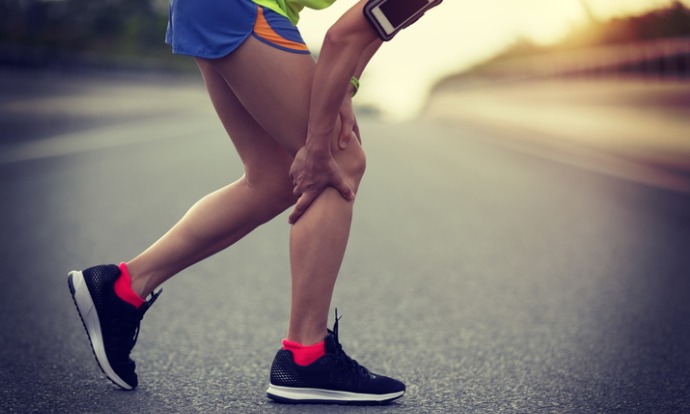
Exercise Injuries: Should I See A Sports Medicine Doctor?
Running is a great cardiovascular exercise that many people engage in to be healthy and manage their weight. However, 60% of runners experience an injury severe enough to force them to stop activity (Cleveland Clinic, 2018). It can be a safe and effective workout if done properly, but there are many factors you need to consider before engaging in a jog.
Risk Factors for Injury
- Lack of flexibility
- Inadequate strengthening
- A running surface that is too firm (asphalt, cement, etc.)
- Excessive training or overuse
- Improper shoes
- Old age
- Preexisting conditions
- Obesity
Running injuries can be either acute or chronic. Acute injuries are sudden and can usually be treated completely in time. These include broken bones, muscle and ligament tears, and lacerations. If you experience an acute injury: stop the bleeding, ice the area, and immobilize the joint. If there is immediate swelling, pain, inability to move, or cracks/pops coming from the joint, seek assistance from a sports medicine doctor. Chronic injuries are due to repeated joint impact over an extended period of time, or overuse of the joint. These are not as easy to treat as acute injuries and almost always require medical advice.
If you run regularly, it is imperative that you are mindful of any pain or discomfort you may feel during or after your workout. Sometimes it’s nothing and it may even go away, but dismissing exercise-induced pain can result in serious permanent injuries. If you think you have experienced any of the conditions below, you would benefit from seeing a sports medicine or orthopedic specialist.
Chronic Injuries:
- Runner’s knee
- Achilles tendonitis
- Plantar Fasciitis (heel pain)
- Iliotibial Band (ITB) syndrome – pain outside the knee
- Shin splints
- Stress fractures
- Muscle strains/sprains
- Damaged cartilage
5 Ways To Prevent Injury:
- Find the right shoes. These will vary with cushioning, arch support, and weight of the shoe. Learn more here on how to select the right shoes for your feet. The best shoes are not necessarily the most expensive; each person’s perfect running shoes will vary based on their feet.
- Warm up before and after your run. Stretch out your legs, paying extra attention to tight hamstrings and calf muscles. Rotate your torso and stretch out your upper body, as this will help with your stride. Before you run, start with 5 minutes of brisk walking to warm your joints up to the repeated movement.
- Switch it up. Studies show that barefoot running on soft surfaces can be more beneficial for your body and prevents injuries. Try to avoid running on asphalt, concrete, and other hard surfaces; they increase the impact on your joints which is the precursor to injury. Instead, seek out fields, tracks, and beaches to do your running.
- Don’t push yourself. It can be tempting to increase your speed and distance, especially when you’re not seeing results and want to kick it up a notch. However, this will only increase your risk of injury. Once you’ve established a good distance for yourself, repeat that same distance for at least a week or two, depending on your experience. The key is to build progress slowly, making sure to give your body time to adjust and prevent inflammation.
- Do not run with an injury. Even if you are only experiencing minor pains, you should take it easy and seek a sports doctor’s opinion. These minor pains could indicate an underlying injury. Running on it will only lengthen your recovery time and risk permanent injury.
Sports Medicine Treatments at Rejuvinix
- Visco-6 Series – a six-step, nonsurgical treatment that effectively reduces pain and restores long-term joint function
- Professional Knee or Hip Bracing – while braces are available in stores, they are not all created equal. Talk to your sports medicine doctor to determine if your joint needs compression, alignment, or custom therapy and stabilization.
- PRP Therapy – Advanced Platelet-Rich Plasma treatment uses platelets extracted from your body to reduce inflammation, heal the joint, and slow the progression of osteoarthritis.
- Regenerative Cell Therapy – this treatment uses regenerative cells extracted from your own body (there is a donor cell option) to reduce pain and inflammation and aid in the development of new cartilage cells.
If you think you have an exercise injury, contact the sports medicine doctors at Rejuvinix in Virginia Beach. Call (757) 317-2864 or go online to schedule your consultation. Don’t wait to get it checked out – the sooner to take action, the better your outcome will be!
